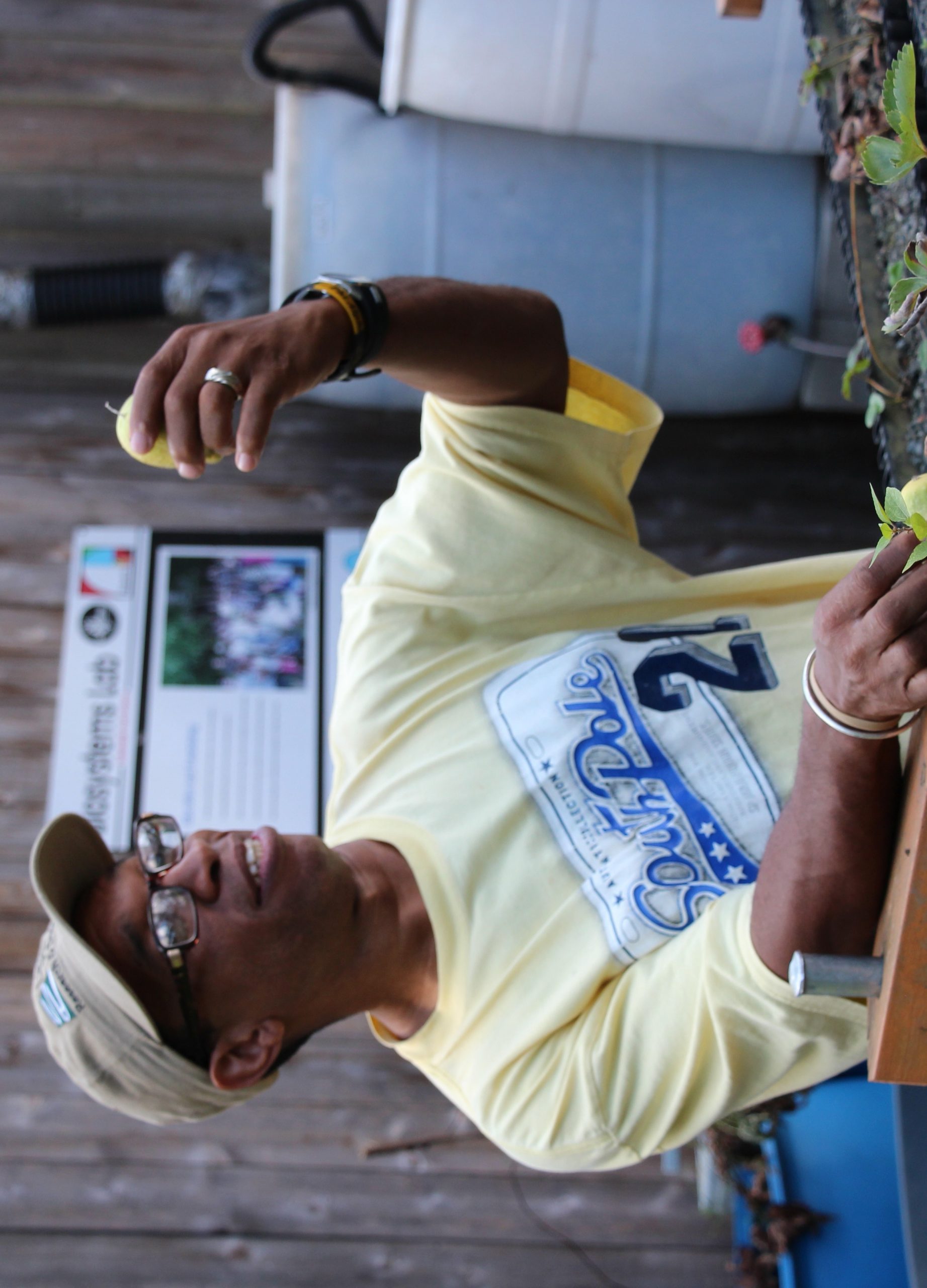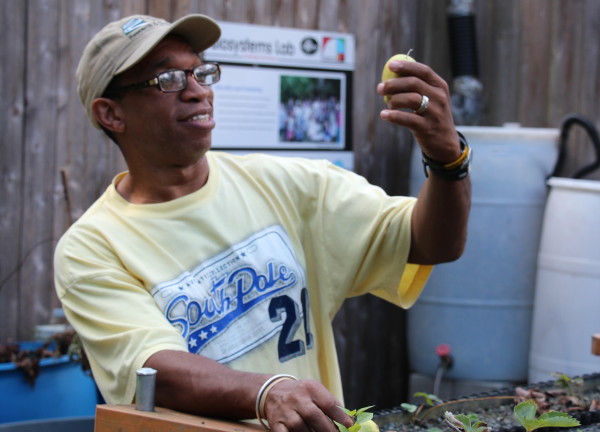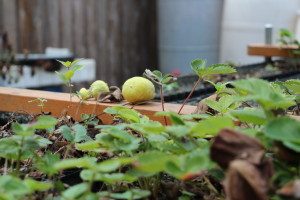

Photo by Ralph Hernandez | The Signal
The Outdoor Activity Center of Atlanta located in Oakland City creates an environment where locals can learn how to grow fresh herbs, vegetables, and fruits while connect with the community.
Established in 1975, owned by the city of Atlanta, it’s a outdoor nature reserve with 26-acres of land. The community garden is a part of that land with 1.5 acres of green space. There are 3 hiking trails that lead up to the main office, and interactive team build rope course, a playground for the children and an aquaponics system.
Connecting with the Community
Locals come from all over Atlanta to help cultivate the garden. It’s a learning process and most volunteers learn on the go.
Imran Battla, started as a volunteer in 2009, today he manages the garden and helps out at the center where ever he is needed. While volunteering for the center Battla worked as a contractor for the Atlanta workforce development agency. In 2011, he worked with a group of students who participated in the mayor’s youth program.
During the spring and summer the students worked by helping to keep the trails clean. The idea for a garden emerged after the group of students visited a previous community garden. They were inspired, and decided to make their own garden, because they wanted to add something nice in the community.
The garden became a new project that was apart of The Outdoor Activity Center.
“It was a great program, loved it, [I] didn’t know anything about gardening, [and] [we] just started with what we could,” said Battla.
Since the garden first opened, program funding was cut and now materials and maintenance is running on volunteer work and donations.
“My focus is community involvement, this garden is making[a] way for people to educate themselves in not just gardening but giving back to the community,” said Battla
Battla says he is currently looking for ways to bring in more financial resources and he needs volunteers that are willing to do service learning at the center.
The service learning allows volunteers to participate and learn how to care for the garden.
“We’re very committed to ensuring [that] we have strong environmental education programing, [and] we are able to do all of this great stuff because of the structure and processes in place,” said Battla

Get Your Hands Dirty
Volunteers start by learning how to remove invasive plants. Knowing the difference between invasive and healthy is important because the invasive plants hinder the healthy plants from growing.
A good tip for spotting a harmful plants is to know that they spread rapidly outside of their native area, according to The United States National Arboretum.
When it comes to planting seeds, the size of the seed will determine the debt of the hole. This can be done by measuring the size of the seed, and digging three times that size.
There are multiple ways to plant a seed, but the best way to learn is through practice. Volunteers are encouraged to participate in service learning if they want to learn more about the different techniques for gardening.
The types of plants in the community garden are very diverse ranging from vine tomatoes to the fragrant basil. The garden has more than one species of tomatoes such as sweet cherry tomatoes and bright green tomatoes. The basil comes in all sorts of sizes and species as well such as Chinese Basil, Lemon Basil and Thai Basil.
When working in the garden dressing accordingly helps to keep the bugs and sun off, and wearing shoes are important for protecting feet.
The Benefits
The herbs have amazing health benefits. Once dried it can be used for tea. Each plant has a specific health benefit, such as lavender, which is great for alleviating stress and increasing blood circulation.
The flowers that attract the pollinator bugs are very important to the garden.
Without the existence of pollinators a lot of plants cannot grow or produce seeds, according to The U.S. Fish & Wildlife Services.
The benefits of organic food is simply removing pesticides, chemicals, waste, and genetically engineered organisms from the growth process of the plants, according to Organic.org.
There is a recently increasing trend of buying food from local farms. In 2012, 163,675 farms were marketing food locally, and from those there was a 5.5 percent increase in sales between 2007 and 2012, according to The U.S. Department of Agriculture’s 2015 Report to Congress.
Behind the Scenes
The Oakland City Outdoor Activity Center has great history in Atlanta. The property is stewarded by a non-profit organization known as the West Atlanta Watershed Alliance or WAWA.
“You have all this beautiful forest on the Westside of town [and] all of these great creeks,” Darryl Haddock, Director of Environmental Education, said. “WAWA was a group started by African Americans on the Westside who were worried about the environment and the water quality in this neighborhood.”
The purpose of WAWA is to help preserve the environment at The Outdoor Activity Center, by protecting green space and keeping water sources clean and educating the community about environmental help, according to the West Atlanta Watershed Alliance, Inc.
“We do creek clean ups, water testing and evaluation, and we also did a lot of environmental education,” said Haddock. “We found that the residents really didn’t understand how pollution was impacting the creeks”
The Outdoor Activity Center is striving to make the community a better place by teaching residents how to care for the environment. Established in 1975, the center offers a wide range of outdoor activities. Volunteers can participate in cultivating the garden. There are 3 hiking trails, a playground and a team bild rope course.
“This is free, it’s a resource, so come and use it. There is lots to do here,” said Evonne Blythers, the Environmental Educator.
